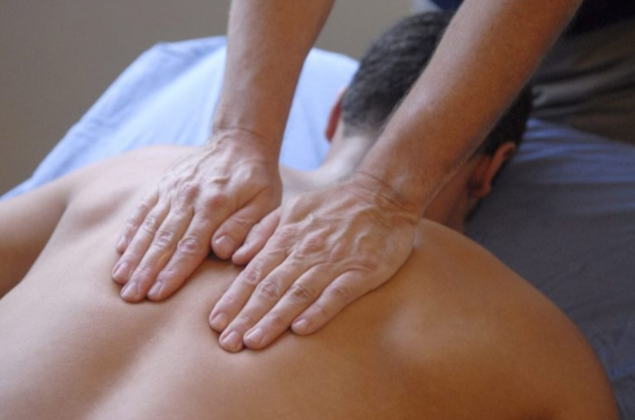Trending News

What To Bring On A Hiking Trip
Going hiking might seem like a pretty simple deal: you get dressed, pack a few items, put on some decent shoes and off you go. Well, as they say, the devil is in the details and not preparing carefully for a hiking trip can turn it into a bad experience or, at worst, jeopardize your safety or health. A few extra minutes spent on preparing ahead will save you a lot of money, time and frustration down the road and will drastically decrease the chances of anything bad happening to you. So let’s go through some of the items which, in our experience, have proven invaluable in our trips and will undoubtedly be so for you too. To make it easier to organize and remember, we can split them into two categories: what you actually wear and what you pack along in your backpack and pockets.

I’ll start with the actual clothing, and generally, I like to be methodical when planning this, so I will start from the toes and work my way all the way up to the head. This generally helps me not forget some essential things such as thermal long johns and the same approach will be doubly useful when getting to the backpack. So, starting from the bottom: the shoes.
The key criteria to keep in mind here are: low weight, breathable but at the same time water-proof so you don’t run the risk of blisters or have to walk around with wet feet (arguably one of the worst feelings ever..), soles with good traction and grip to prevent slipping or even worse twisting your ankle. The footwear should also fit you perfectly while wearing hiking socks and this brings us to the next item on the list: you guessed it, the socks. The general consensus is that merino-wool socks are all around the perfect choice as they are excellent at regulating temperature and wicking moisture away, have natural antimicrobial properties, preventing most of the bacteria that are responsible for bad smells and provide decent cushioning that will allow a comfortable walk without your feet feeling constricted, for more details, check out SocksWell.
Merino-wool is also completely itch-free, so if you were a bit apprehensive when reading “wool,” worry not, it doesn’t feel like the rag wool of olden days. You also need to ensure that the height of the socks is proportional to the height of the shoes, always a bit taller than these and above the rim of the footwear, to prevent chaffing.

Going higher up, on to the legs: while the pants should also be chosen carefully, there is a bit more leeway here. You need to ensure that they are form fitting but not restricting your movement, so, ideally, you shouldn’t be using jeans. Water-proof and wind-proof pants with a few well-placed pockets will literally go a long way. During warmer seasons you might opt for convertible pants which can turn into shorts or at least for pants with zipper-vents that can help you cool down. When hiking on colder days, you might also need to bring along some thermal long johns that will help tremendously with insulating and keeping you warm. Moving on to the upper body, here, similar to the legs, layering is key as this allows you to add or remove layers as needed.
Weather can change very swiftly on hiking trails, so you need to be able to adapt as you go. The base layer should consist of a light-weight t-shirt or tank top, made of synthetic fabrics (e.g., polyester, nylon) or very fine merino wool. Don’t use regular cotton t-shirts as they keep moisture in and will become uncomfortable fast as well as increasing the risk of catching a cold. For the mid layer you should ideally opt for a light fleece top and, if weather forecast says anything about light rain or drizzle, add an insulated jacket or vest. If heavier rain is on the menu, then replace that with a full-fledged rain jacket.
Lastly, for the face and the head, depending on the weather, you might need to bring either a sun cap (generally wide-brimmed) or a cap that will keep you warm during cold days. For more extreme weather and temperature a balaclava, face mask or neck gaiter should be considered. Check out Vivipins who can help you making stylish custom gaiters to make your hiking trip more elegant.

As for what you pack in the actual backpack, there are a few must-haves and some additional quality of life items, if space and weight permit it. Starting with the mandatory pieces: first of you should consider mandatory to bring a second pair of each piece of clothing that forms the base layer. For socks and underwear, that should be at least three pairs, considering their crucial importance as well as the fact that they take very little space and weigh almost nothing. Then you should pack the backup-plan clothes which will be used in case the weather changes: this means the thicker or thinner clothes, depending on which conditions you start your hiking trip. With all the clothes out of the way, we need to talk about the essential accessories: first and foremost a first aid kit. I’m sure there’s no need to elaborate why this item is mandatory, but I will, however, feel like it’s necessary to add that a makeshift kit, made of bits and pieces that you had lying around at home, will simply not cut it. This is really the last item that you should skimp on, and it should be your top priority to buy a professional kit that was put together by medics and designed by experts. Hopefully, you will never need to use it, but if you still end up doing it, you’ll be incredibly grateful that you followed this advice. The next mandatory item is a source of light, even if you don’t plan on hiking through darkness or spending the night camping as the idea is to prepare for the worst. Initially, you might be tempted to bring a small pocket flashlight or rely on your phone, but in our experience, these are both quite bad ideas. Either of these will keep one of your hands occupied which is a big risk and will not allow you to climb or use your hands to balance yourself on certain situations.
Moreover, the battery generally lasts very little, and in the case of the phone, this should be kept for emergency calls, if the need arises. A headlamp is an ideal solution in this case, and nowadays there are plenty of available options to choose from. They are light, compact, will keep your hands free and their battery lasts quite a while. On top of that, they are usually much brighter so you will have overall better visibility.
I also never leave on a trip without a proper compass and a map of the area where I’ll be hiking. I know most people think that’s outdated tech, as nowadays we have phones and GPS, but these are in many circumstances unreliable and dependent on power sources, whereas a compass can be used anywhere and in any type of weather or relief. Using one might seem a bit daunting or confusing at first, but there are plenty of very detailed guides that will explain and teach you how to do it properly. A source of fire is crucial as well, and I’m sure it’s not debatable that matches or lighters are not in a way suitable for hiking or reliable. A high-quality, all weather, fire starter will be your best friend in case you ever need it and its weight or size are completely negligible. Never go on a hike without one. And lastly, but definitely not least on the must-have list, you have the water and food supplies. A solid no-spill water bottle should work just fine and ensure that you refill it from clear creeks every chance you get; you never know how long you will need to go without finding another water source. In terms of food, you’re looking for nutrient-rich, light and non-perishable, such as: trail mix, granola bars, energy bars (or gels), seeds, nuts, meat jerky, etc.

With all the essentials out of the way, depending on the available backpack space and weight, how many days you’ll be hiking, the terrain, the season, there are additional pieces of equipment that will make your life easier or allow you to be better prepared for a variety of situations. Items such as a pocket knife or swiss-knife, twine, cord or rope, plastic or zip-lock bags, insect repellent, sun protection are all very useful and can generally be fit in your pockets. Of course, hiking is always a balancing act, so proper knowledge of the area where you’ll travel, as well as the upcoming weather, will allow you to correctly evaluate what you should bring and what is redundant. After all, you can’t really bring your entire house along with you 🙂
Copyright © 2025 WyattScott. All Right Reserved.








.png)






